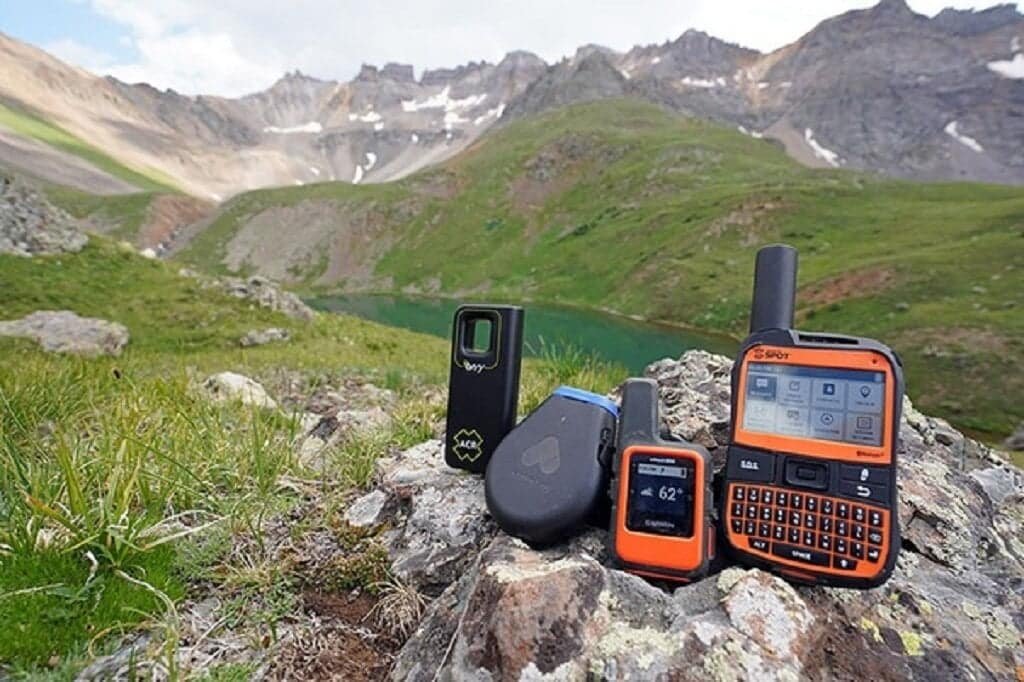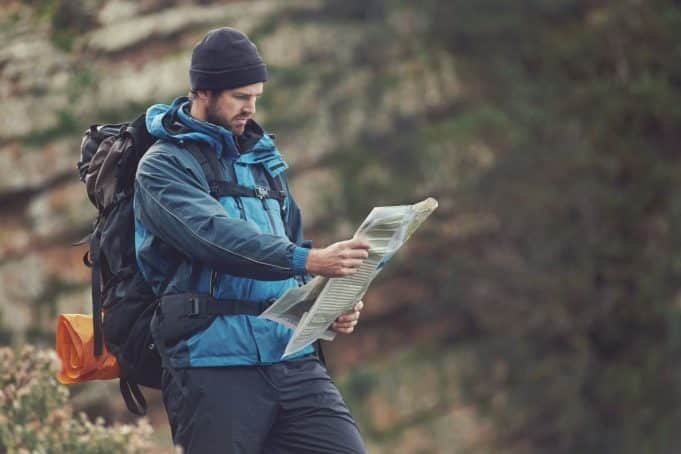Navigating through nature is one of the most exhilarating experiences a hiker can have. The allure of unfamiliar terrains, with its hidden trails and unexpected landscapes, beckons many to explore. However, with this thrill comes the responsibility of ensuring one’s safety. Understanding the importance of navigation when hiking is crucial. Venturing into the wilderness without a sense of direction or proper tools can lead to unwanted adventures.
The dangers of losing one’s way in unfamiliar territory can range from a prolonged journey and mild discomfort to life-threatening situations. It’s vital to be prepared and possess essential navigation skills. If you are thinking about “you are hiking into unfamiliar terrain. what is the best way to keep your bearings?” To learn more, continue reading this article.
Preparation Before Hiking
Venturing into the great outdoors is not just about lacing up your boots and setting off into the wilderness. Proper preparation is key to ensuring a safe and enjoyable experience. You are Hiking into Unfamiliar Terrain. What is the Best Way to Keep Your Bearings? Here’s a guide to help you get ready for your next hiking adventure.
Researching the Area:
Knowledge is power, and when it comes to hiking, it’s also safe. Before setting out:
- Maps: Acquire a detailed map of the area you intend to hike. Familiarize yourself with the trails, terrain, and any potential hazards.
- Trail Descriptions: These provide insights into the trail’s difficulty, points of interest, and any challenges you might face.
- Landmarks: Identify significant landmarks on your route. These can be mountains, lakes, unique rock formations, or man-made structures. Recognizing these can help keep you oriented during your hike.
Weather Conditions:
Mother Nature is unpredictable, but with a bit of research, you can have an idea of what to expect.
- Check the weather forecast for the day or days you plan to hike. This will inform you about possible rain, snow, high temperatures, or other conditions.
- Understand the impact of weather on visibility. Fog, rain, or snow can significantly reduce visibility and make navigation challenging. Plan accordingly and consider alternative routes or dates if the weather seems too adverse.
Gathering Necessary Equipment:
While your spirit of adventure might be all you think you need, the reality is a bit different. Equip yourself with the essentials:
- Compass: This traditional navigation tool is crucial. Even in the age of technology, knowing how to use a compass can be a lifesaver.
- Topographical Map: Unlike regular maps, these provide detailed information about the terrain, elevations, and depressions in the landscape. When paired with a compass, they are an excellent navigation aid.
- GPS Device or Hiking App: Modern problems require modern solutions. GPS devices provide real-time location tracking, while many hiking apps come loaded with trail maps, descriptions, and other useful features.
- Whistle: This small tool can make a loud noise. In case you get lost or face danger, blowing a whistle can alert fellow hikers or rescue teams.
- Backup Power Source: If you’re relying on electronic devices, having a backup power source, like a portable charger, is essential. It ensures your devices remain operational throughout your hike.
While the call of the wild might urge you to set out impulsively, taking the time for proper preparation can make your hiking experience both enjoyable and safe. Happy hiking!
Read More: What to Wear When Hiking in Summer
Understanding Basic Navigation Skills
Once you’re equipped, mastering some fundamental navigation skills can amplify your hiking experience and ensure safety. Reading a topographical map is foundational. Understand the contour lines which depict the elevation and shape of the land. Recognize important landmarks on the map and observe the scale to determine distances.
Next, get comfortable using a compass. The primary purpose is to identify magnetic north, which then aids in orienting your map and determining your direction. Combining the compass with your map ensures you’re always aware of your direction relative to the terrain.
Estimating distances can be achieved by either timing your hike or counting steps. This skill helps in gauging how far you’ve traveled, ensuring you’re on track. Finally, nature provides its signposts. Recognizing natural landmarks, such as distinct mountain peaks, the direction of rivers, or unique vegetation, can serve as reference points, aiding in keeping your bearings.
In conclusion, hiking in unfamiliar terrains is an adventurer’s dream. However, the essence lies in balancing this thrill with preparation and awareness. With the right tools and skills, every hike can be both safe and exhilarating.
Using Technology Responsibly

In today’s digital age, technology has enhanced our outdoor experiences, providing tools that can aid in navigation, safety, and enjoyment. One of the most prominent advancements is the development of GPS devices and hiking apps. These tools offer real-time tracking, route planning, and even weather updates. They can be lifesavers, especially when wandering into unfamiliar terrains, ensuring you always have a sense of your location.
However, as with all tools, they come with their set of limitations and potential inaccuracies. GPS signals can be affected by dense forests, deep canyons, or even cloud cover. Some apps might have outdated maps or incorrect trail data. Therefore, while these tools are beneficial, a complete reliance on them can be risky.
One of the crucial aspects of using technology outdoors is being aware of battery life and the importance of backup power sources. A GPS device is only as good as its power source. Being in the middle of a hike and having your device die on you can be disorienting. Always carry spare batteries or portable chargers to ensure continuous access.
Read Also: What to Do If Bitten by a Rattlesnake While Hiking
Staying Oriented During the Hike
While technology is an asset, basic navigation skills remain essential. Regularly checking your position against the map helps in confirming you’re on the right track. It’s a good habit to correlate digital data with physical landmarks.
If ever in doubt about your bearings, employ the “stop, look, and re-orient” method. Halt, review your surroundings, consult your map, and re-establish your direction. This pause can prevent further diversion from the right path.
Moreover, while well-trodden trails are tempting to follow, be cautious. Some might lead you astray, or worse, end abruptly. Over-reliance on trials can sometimes lead to false confidence.
Nature offers its navigational aids. Paying attention to the direction of water flow can indicate valleys or outflows. The sun’s position is a natural compass, signaling time and cardinal directions. Observing these natural indicators can provide guidance when artificial tools fail.
What to Do if You Get Lost
Despite best efforts, there might be moments of disorientation. In such times, the first rule is to stay calm and avoid panic. Anxiety can cloud judgment and lead to rash decisions.
Always try to retrace steps to the last known position. Familiar grounds can offer clarity and a starting point to re-orient. If lost with a group, use the whistle to regroup or signal for help.
Your phone can be a crucial lifeline. Conserve its battery and if available, activate emergency features on GPS devices. These features can send distress signals or share real-time locations with rescuers.
If nightfall is approaching and the way back is still uncertain, consider setting up a noticeable campsite. Ensure it’s visible from a distance, making it easier for rescuers to locate you.
In all endeavors, safety should be the priority. The wilderness, with its beauty, can be unpredictable. Balancing technology with traditional navigation skills ensures not just an enjoyable but also a safe hiking experience.
Also Read: What is the Longest Hiking Trail in North America
Additional Tips and Tricks
Venturing into the great outdoors is a thrilling experience, but a few additional tips can ensure it remains a pleasant one.
Firstly, while the wilderness often calls on you to trust your instincts, it’s essential to couple this with logical decision-making. Our gut feelings can be invaluable, guiding us when the path seems uncertain. However, these instincts should always be measured against concrete information like maps, trail signs, or compass readings.
When embarking on an adventure, it’s always safer and often more enjoyable to travel with a group. There’s strength in numbers, and having multiple perspectives can be beneficial in navigation and decision-making. If solo journeys are more your style, always ensure someone outside knows about your hiking plan. This includes your intended route, expected return time, and any checkpoints you aim to reach. Such information can be vital if search and rescue efforts become necessary.
During your hike, remember to take regular breaks. These aren’t just to rest your feet, but they’re moments to check your bearings and ensure you’re still on the right path. Additionally, these breaks are excellent reminders to hydrate, ensuring you stay sharp and energized.
Lastly, while the allure of a moonlit trail might seem tempting, avoiding night hiking in unfamiliar territory is advisable. The dark brings reduced visibility, increased chances of injuries, and the risk of losing your way.
Conclusion
In wrapping up, venturing into nature’s embrace is one of life’s purest joys. The sounds, sights, and sheer expansiveness of the outdoors are unparalleled. However, these wonders come with a set of challenges. The importance of preparation and constant awareness cannot be emphasized enough. Whether it’s the tools you bring, the skills you hone, or the precautions you take, every step counts.
So, as you lace up those hiking boots and set your sights on the horizon, remember to always prioritize safety over exploration. The true essence of adventure lies not just in reaching new frontiers but in doing so with respect for nature and oneself. We’ve covered the topic of “You are hiking into unfamiliar terrain. What is the best way to keep your bearings?”. If you have additional suggestions for navigating unfamiliar landscapes, please share them with us in the comments below. Safe travels!
Read Also: How to Pack a Backpack for Hiking
Frequently Asked Questions (FAQs)
Here are some commonly asked questions about “You are Hiking into Unfamiliar Terrain. What is the Best Way to Keep Your Bearings?”:
How can I hike safely in unfamiliar terrain?
Exploring unfamiliar terrains is a unique way to discover new locations. However, it carries its set of challenges. Before embarking, it’s essential to research the region, paying close attention to weather patterns and potential dangers. Stay informed about the risk of forest fires and other possible natural calamities that might affect your chosen trails. Online resources can offer invaluable insights into specific hiking areas. Being well-informed equips you to handle unexpected situations. Additionally, pack essentials like a first-aid kit, extra snacks, water, and a fire starter to tackle any unforeseen challenges.
How can I improve my navigation skills?
Consistent practice leads to mastery. Begin by refining your skills in reading maps and using a compass in areas you know well. Embark on brief hikes and try to navigate without the crutch of technology. Consider joining hiking groups or attending navigation classes to gain insights from seasoned hikers. Moreover, acquainting yourself with local plants, animals, and land features can offer essential hints about your environment.
Should I take extra safety measures when hiking in unknown areas?
Absolutely. Always let someone know about your hiking itinerary, including how long you plan to be out and the path you’re taking. Pack vital items like additional food, water, and clothing suitable for cold conditions. It’s also a good idea to hike with a companion or be part of a guided group for enhanced security.
Can I depend solely on GPS and navigation apps when hiking in unknown areas?
Though GPS and navigation apps are valuable resources, they shouldn’t be your only means of direction. Issues like device malfunctions, battery depletion, or signal loss can compromise their utility. Always have a traditional map and compass on hand and familiarize yourself with fundamental navigation techniques.
How can I improve my navigation skills for hiking in unfamiliar terrain?
Start by honing your navigation techniques in areas you’re accustomed to before exploring unknown terrains. Engage with community hiking groups or enroll in navigation classes to acquire expertise. Consistent practice will bolster your confidence in navigating unfamiliar grounds.
By adhering to these recommendations and being well-prepared, you’ll be equipped to tackle unfamiliar hiking routes while maintaining your direction. Always place safety first, cherish nature, and relish the beauty it presents. Enjoy your adventures!















